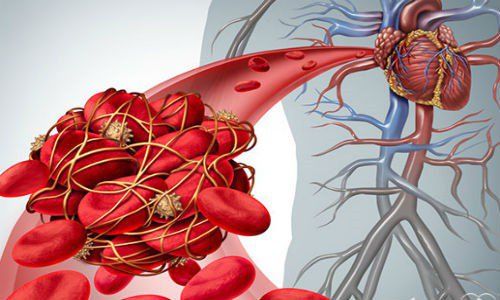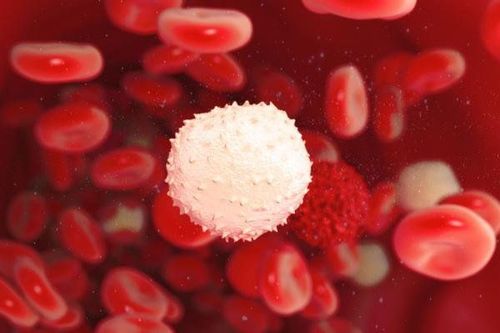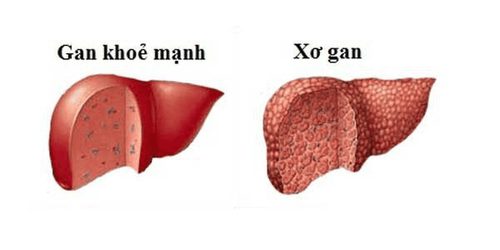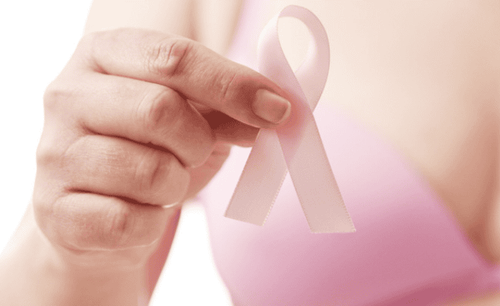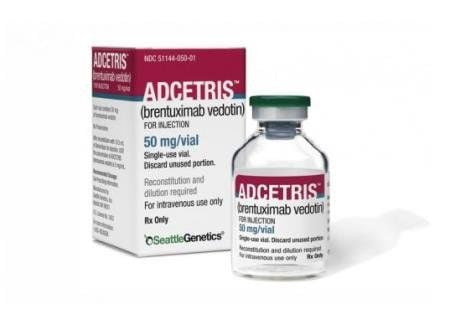This is an automatically translated article.
Hodgkin Lymphoma (Hodgkin's disease) is one of a number of blood malignancies that develop when the lymphocytes get out of control. Cancer cells begin to grow in the lymphatic system and follow the network of organs, nodes, and vessels throughout your body. So what is Hodgkin Lymphoma (Hodgkin's disease)? What Causes Hodgkin's Disease? The following article will provide necessary information about this malignant blood disease.
1. Hodgkin Lymphoma (Hodgkin's disease) What is it?
Hodgkin's Lymphoma, also known as Hodgkin's disease, is a type of lymphoma or blood malignancy.
Lymphoma is a type of blood cancer that develops when white blood cells called lymphocytes grow out of control. White blood cells are part of a patient's immune system. They travel throughout the body in the lymphatic system, helping the person fight off infection.
Lymphomas can be grouped into Hodgkin lymphoma or non-Hodgkin lymphoma, depending on what the lymphoma cells look like when your doctor examines them under a microscope.
Hodgkin lymphoma contains abnormal cells called Reed-Sternberg cells. It is named after Dr. Thomas Hodgkin, who first described it in 1832. Non-Hodgkin lymphoma is any type of lymphoma that is not Hodgkin lymphoma. The doctor has figured out the possible causes and symptoms of lymphoma.
There are several videos about Hodgkin and high-grade non-Hodgkin's lymphoma that patients will find helpful. It is designed to help parents and carers with lymphoma talk to their children about it.
Professor John Radford gives an overview of Hodgkin lymphoma, including what it is, who it can affect, and how it's diagnosed and treated.
Signs and symptoms of Hodgkin Lymphoma (Hodgkin's disease): Features of Hodgkin lymphoma include:
Asymptomatic lymphadenopathy Unexplained weight loss, unexplained fever, night sweats Pain chest , cough, shortness of breath Itching Pain at sites of nodular disease Back or bone pain Multiple sclerosis Hodgkin lymphoma (NSHL) has a strong genetic component and was previously diagnosed often in families Palpation, no pain in the cervical, axillary or inguinal region Involvement of the Waldeyer ring (back of the throat, including the tonsils) or occipital (back of the lower back of the head) or epiglottis (inside the proximal upper arm) elbow) Splenomegaly or hepatosplenomegaly Superior vena cava syndrome may develop in patients with enlarged mediastinal ganglia. cerebellar sclerosis, neuropathy, Guillain-Barre syndrome or multifocal encephalopathy
2. Causes of Hodgkin's disease
2.1. What causes Hodgkin's lymphoma Hodgkin's lymphoma isn't exactly known, but the disease develops when changes in the DNA of white blood cells leave a person uncontrollable. More research is needed to understand why the disease develops in some people and vice versa.
Several factors have been attributed to the development of classical Hodgkin lymphoma such as:
Genetics Due to suppression of the immune system Due to infection with Epstein-Barr virus leading to mononucleosis Experts believe Genetics may also play a role in the development of NLPHL due to certain genes such as SGK1, DUSP2, and JUNB.
2.2. Some risk factors for Hodgkin Lymphoma (Hodgkin's disease) Risk factors for Hodgkin lymphoma include:
Age. Most people who develop Hodgkin lymphoma are between the ages of 20 and 40, and those over 55. Epstein-Barr virus. Being infected with the virus that causes mononucleosis, also known as mono, increases your risk of developing Hodgkin lymphoma. With men. Men are about 85 percent more likely to get the disease than women. Family history. People who have a brother, sister, or parent with Hodgkin lymphoma also have a higher risk of developing the disease. Identical twins have a very high risk. But nearly everyone with Hodgkin lymphoma has no family history of the disease. Weakened immune system. People with HIV also have a higher risk of developing Hodgkin lymphoma. People who have been taking immunosuppressive drugs after an organ transplant are also at high risk. 2.3. How is Hodgkin Lymphoma (Hodgkin's disease) diagnosed?
To diagnose Hodgkin lymphoma, your doctor will do a physical exam and ask you about your medical history. Your doctor will also order some tests to help them make an accurate diagnosis.
The following tests may be part of the diagnostic process:
Imaging tests. Imaging tests such as X-rays, PET scans, or CT scans can help your doctor look inside the body for enlarged lymph nodes and help determine the stage of the disease. Lymph node biopsy. A biopsy involves removing a portion of lymph node tissue to check for the presence of abnormal cells. Blood tests. Your doctor will order blood tests such as a complete blood count or erythrocyte sedimentation rate test to measure the levels of red blood cells, white blood cells, and platelets. These tests can also help your doctor understand how advanced your cancer is and how you respond to treatments. Your doctor may also order blood tests to measure the levels of lactic acid dehydrogenase and uric acid in your blood. Immune styling. Doctors will use laboratory tests to analyze the biopsy samples to determine if lymphoma cells are present and, if so, what type they are. Check lung and heart function. A lung function test and an ultrasound of your heart called an echocardiogram will help determine how well your lungs and heart are working. A bone marrow biopsy involves removing and examining the marrow inside your bones to see if the cancer has spread. 2.4. Grades and Stages of Hodgkin Lymphoma (Hodgkin's Disease) Once a diagnosis of Hodgkin lymphoma is made, it will be known what stage the cancer is in. Staging describes the extent and severity of the disease. It will also help your doctor determine the best treatment options for you.
There are four general stages of Hodgkin lymphoma:
Stage 1 (early stage). Cancer is found in one area of the lymph node, or cancer is found in only one area of an organ in the body. Stage 2 (locally developed disease). Cancer is found in two lymph nodes on one side of the diaphragm, which is the muscle underneath the person's lungs, or cancer is found in one lymph node area and an adjacent organ. Stage 3 (the disease develops). Cancer is found in lymph node areas both above and below the person's diaphragm, or cancer is found in one lymph node area and an organ on opposite sides of the diaphragm. Stage 4 (spreading disease). Cancer is found outside the lymph nodes and has spread to other parts of the body, such as the bone marrow, liver, or lungs.
3. Features to know when treating Hodgkin lymphoma.
3.1. What are the symptoms of Hodgkin lymphoma? The most common symptom of Hodgkin lymphoma is swollen lymph nodes, which can form lumps under the skin. This tumor is usually painless. It usually develops in some of the following areas of the body:
On the side of the patient's neck In the patient's armpit Around the patient's groin Some other symptoms of Hodgkin lymphoma:
Frequent night sweats Itching skin or areas of skin Fever Fatigue Always Enlarged Spleen Contact a specialist immediately if you have any of these symptoms. It could also be a symptom of some other health condition. And it needs to be diagnosed correctly.
3.2. How is Hodgkin lymphoma treated? Treatment for Hodgkin lymphoma depends on the stage of the disease. The main treatment options are chemotherapy or radiation therapy.
After treatment, the doctor will monitor the patient on a regular basis. Always have regular check-ups as prescribed by your doctor.
Radiation therapy
Using high-energy beams of radiation when giving radiation therapy to kill cancer cells in specific areas of the body. Radiation therapy is highly effective at killing cancer cells in people with Hodgkin lymphoma. Both cases:
After chemotherapy for classical Hodgkin lymphoma In some cases NLPHL tends to spread more slowly than classical Hodgkin lymphoma Doctors tend to use radiation at the lowest effective dose to minimize possible side effects.
Chemotherapy
Chemotherapy is a method of using drugs that will kill cancer cells. Chemotherapy drugs can be given by mouth or by intravenous injection, depending on the specific drug.
The most common chemotherapy regimens are classical Hodgkin lymphoma and NLPHL known as ABVD. It is a mixture of the following drugs:
Adriamycin (doxorubicin) Bleomycin Vinblastine Dacarbazine (DTIC) Other drug therapies
Along with chemotherapy, many other drug therapies may be used , such as:
Steroids. Steroids are sometimes added to chemotherapy if initial treatment is not effective or if cancer is still growing. Targeted therapy. Targeted drugs attack cancer cells without damaging healthy cells as much as chemotherapy drugs. A drug in this class called rituximab may be added to chemotherapy if you have NLPHL. Immunotherapy. Immunotherapy drugs increase a person's immune system's ability to target and destroy those cancer cells. Brentuximab vedotin. Brentuximab vedotin is a new medicine used to treat a specific type of Hodgkin lymphoma called CD30-positive Hodgkin lymphoma. Bone marrow transplantation
A bone marrow transplant, also known as a stem cell transplant, may be an option if a person has not responded well to chemotherapy or radiation. Stem cell transplants transfer healthy cells, called stem cells, into the patient's body to replace cancerous cells in the patient's bone marrow.
The two main types of transplant are:
Autologous stem cell transplant. The patient's own stem cells are collected before treatment and stored until after the patient has received high-dose chemotherapy or radiation. The bone marrow cells are then returned to the patient's body after treatment. Allogeneic stem cell transplantation. Stem cells from a donor, usually a brother, sister, or close relative, will be transplanted into the patient's body. Heterozygous stem cell transplantation is usually performed only when an autologous transplant has failed. Alternative treatments
Some alternative therapies can help you manage your lymphoma symptoms, although they will not cure your disease. They can be included with traditional treatment but should not be substituted.
Treatment options include:
Acupuncture Massage Therapy Relaxation techniques such as yoga, qigong, tai chi or meditation
Please dial HOTLINE for more information or register for an appointment HERE. Download MyVinmec app to make appointments faster and to manage your bookings easily.
References: emedicine.medscape.com, ancer.org, healthline.com




